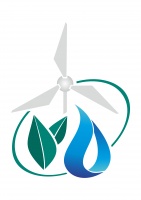Increasing water supply of distant pastures
| Title | Increasing water supply of distant pastures |
|---|---|
| Category of tools | System for enhancing water availability |
| Field of application |
|
| Usability of practice for adaptation to climate change | High |
| Implemented by | Kazakh Scientific Research Institute of Water Economy (KazSRIWE) LLP |
| Used by |
Country: Kazakhstan Province: South Kazakhstan Region Settlement: distant pastures of A. Sagintayev LLP |
| Practice also applied in the following localities |
Muratbek Farm, Shilik Rural District, Otyrar District, Southern Kazakhstan Region |
| Local specifics |
The climate of Jambyl Region is characterized by significant dryness and continentality. The majority of Talas District is located in the desert zone. The warm season is characterized by high air dryness. Despite substantial thermal resources, considerable lack of moisture limits crop cultivation. The majority of the district’s territory is used for spring, fall and winter grazing. Water supply of pastures is ensured by underground water. |
| Practice usage period |
Start date: 01.06.2015 End date: 15.09.2015 |
| Problem solved through this practice |
Water supply of the farms located in the zone of distant-pasture livestock production; possibilities to utilize idle wells containing highly mineralized water, use water resources in a rational manner, as well as to increase the area of used pastures by way of supplying them with additional water. |
| Tools used in the practice |
Technology of reverse osmosis water de-salination in well casing columns |
| Description of the practice and its results |
The water-lifting and de-salination technology includes several innovative elements like air-tight wellheads, pipeless water-lifting devices and de-salination module block in absence of high-pressure pump to drive water through them. Water de-salination with its subsequent separation into soft (permeate) water supplied to consumers and saline concentrate diverted for disposal. Protected by Patent No. 23118 of the RK: - application of water lifting pipes for submersible pumps is excluded; - pollution of the water-bearing layer is excluded; - labor input (assembly and dismantling works) decreases by 40-70%; - power costs (water lifting) decrease by 30%; - water return of the water-bearing layer due to vacuuming the water reception section increases; - exclusion of capital costs associated with construction of a heated room for de-salination block. Economic efficiency The social effect lies in supplying consumers with high-quality drinking water, and the economic effect – in growing livestock population grazing in distant pastures with additional (de-salinized underground) water supply. The later will increase Kazakhstan’s food security and meat export capacity, as well as enhance the overall environmental condition of distant pastures. |
| Lessons learnt and recommendations made |
Enhancing water supply of pastures by restoring existing and, where possible, building new well infrastructure; possibility of using water sources with mineralized water that were not used previously, providing livestock crews and cattle on pastures with drinking-quality water. |
| Source of practice |
Domestic tools (outcomes of research by domestic R&D organizations) |
| Readiness for implementation |
1. Cost of implementation: Moderate 2. Approximate cost of investment per 1 ha: 2,000 thous. tenge 3. O&M costs: Moderate 4. Expert support: Needed at implementation stage |
| Brief information on the project |
The R&D works were executed under the theme “Investigating the Process of De-Salinizing Different Types of Mineralized Underground Water and Identifying De-Salination Regimes for Water Supply of Pasturable Land” (2013-2015, amount of funding – 13.5 mln tenge) within the framework of Project 0190/GF3 under Program 055 “Research and scientific-technical activities”, Sub-Program 101 “Grant funding of scientific research” as per the contract with SE “Science Committee of the Ministry of Education and Science of the Republic of Kazakhstan”. The process of de-salinizing mineralized underground water with different physical and chemical characteristics was designed and adjusted in lab and field conditions on distant pastures. In addition, the technical standards of operating devices to treat underground water with 2-7 g/l mineralization (as per Patent No. 23118 of the RK) were developed. The practice was deployed under the R&D Workstream “Scientific substantiation of pasture water supply system based on GIS-technologies with the aim of intensifying distant-pasture livestock production” within the framework of Project “Development of technologies to improve and ensure rational use of pastures to advance distant-pasture livestock production” (2015-2017). |
| Funding source | Ministry of Agriculture of Kazakhstan |
| Information sources |
|
| Form submission date | 18.05.2018 |
| Print Compare with other practice |




